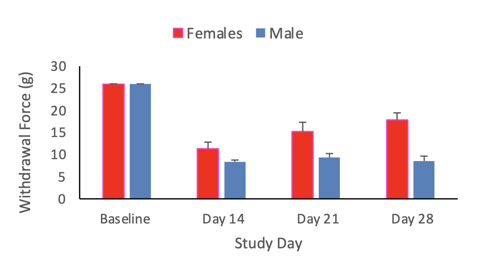2 min read

By: MD Biosciences on May 7, 2024 4:32:36 PM

Chemotherapeutics agents are commonly used to treat cancer, but come with side effects such as neurotoxicity and peripheral neuropathy, which significantly impact the quality of life of cancer patients. One of the most severe complications is the onset of acute or chronic neuropathic pain experienced by approximately 60% of patients. Symptoms can range from minor tingling to severe paralysis, profoundly impacting daily life. These symptoms become a barrier to achieving effective anti-tumor doses, since chemotherapy may be halted or reduced. Therefore, CIPN models are crucial for advancing cancer treatment outcomes and alleviating patient suffering.
In vitro screening assays for CIPN
In vitro assays, such as the CIPN neurodegeneration assay, offer a method to examine compound effects on neuronal protection and integrity. The culture consists of dorsal root ganglion (DRG) neurons from adult rats, which are then treated with a chemotherapeutic agent. These assays are valuable for screening compounds before advancing to in vivo studies, providing insights into efficacy and safety profiles early in the drug development process.

Figure 1: Neurodegeneration following exposure to chemotherapeutic agent is shown by the reduction in neurite area. After 5 days of conditioning, there is an appearance of blebs. When the test item is added to the culture, the blebs decrease.
In vivo models for CIPN
Chemotherapy-induced peripheral neuropathy is induced in rodents treated with one of four common chemotherapeutic agents. The resulting neuropathy is assessed by measuring allodynia, hyperalgesia, and biomarkers from the sciatic nerve and/or circulating. Additionally, it is important to include both male and female animals in CIPN studies, as behavioral endpoints may differ between the sexes. While preclinical efficacy studies, especially in pain research, are predominantly conducted using male animals, data suggests variations in pain responses between male and female animals.

Figure 2: Withdrawal force (g) shows males remains consistent, whereas the withdrawal force in females increases throughout the study. This suggests that females experience a greater reduction in sensitivity compared to males.
Learn more about CIPN models or download the datasheet here.